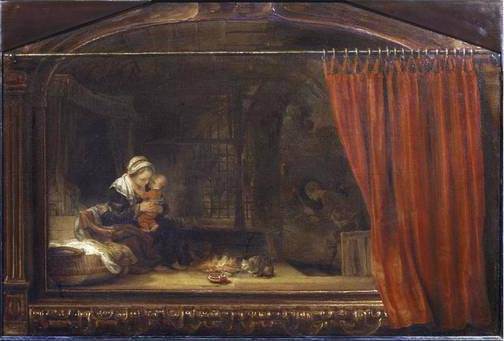
The Holy Family, Rembrandt van Rijn, 1646. Kassel, Museumslandschaft Hessen, Gemäldegalerie Alte Meister.
‘Kwab’: Dutch Design in the Age of Rembrandt ‘KWAB. Dutch Design in the Age of Rembrandt’. Exhibition at the Rijksmuseum brings together 130 auricular masterpieces related to the ‘kwab’ style. 30 June 2018 – 16 September 2018.]]>
Source: Rijksmuseum
Fantastic sea creatures, monstrous beasts, whimsical body shapes and fluid contours that seem to drip like syrup from a spoon: all are manifestations of the ornament style known as kwab, ‘auricular’ or ‘lobate’ – with the English denominations referring to the organic forms of the ear. In the 17th century their almost molten form was to be found on luxury items such as ewers, dishes, furniture, wall-hangings and frames in the most stylish interiors of the elite.
The ‘kwab’ style is the most sensational and important Dutch contribution to the development of decorative art in Europe. Its originators – the Dutch silversmiths Paulus and Adam van Vianen and Johannes Lutma – enjoyed unprecedented fame in their day. Their work was also an inspiration for artists such as Rembrandt and the cabinetmaker Herman Doomer.
In this exhibition, a spectacular design by theatre and lighting designer Keso Dekker, renowned for his ballet sets by Hans van Manen, brings together 130 auricular masterpieces in the Rijksmuseum. A selection of the finest silverware, alongside paintings by Rembrandt and Metsu, prints and drawings, tables, cabinets, gilt-leather wall hangings and brass church decorations, tell the story of this spectacular Dutch Design of the Golden Age.
Related content
Alexander Calder at the gardens of the Rijksmuseum (exhibition, 2014)
Follow us on:


